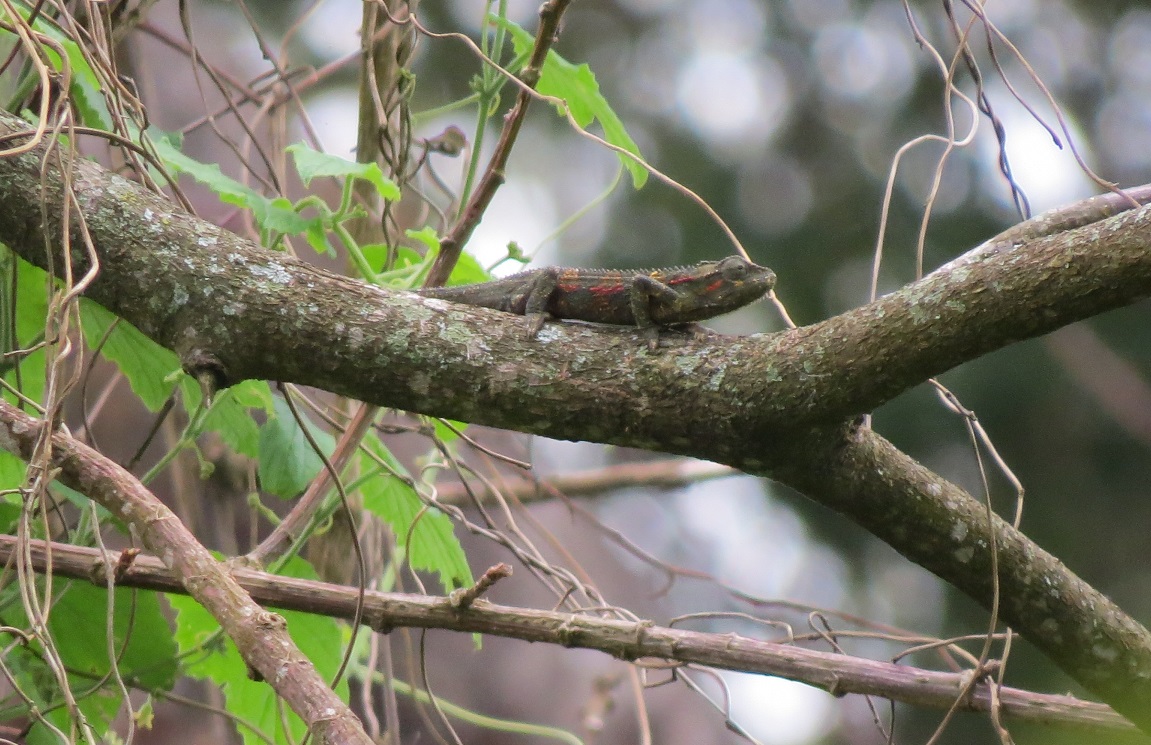Hello Birders,
The following is a late report of highlights from an all too
short birding trip in Kenya beginning on the 22
nd Oct. All time was
spent in the far southwest (Llambwe Valley & Gwassi Hills) and in areas
around Nairobi (Thika – Kikuyu). Thanks to good company, and much appreciated
support from friends and colleagues in Nairobi, it proved to be a rewarding
trip. For further reference, various sound recordings and species lists are
stored at
xeno-canto.org and eBird respectively.
Overall diversity still seems good in Kenya but abundance of
many species encountered seemed low.... no concentrations of anything greater than
500 (Little Swift) and 300 (Abdim’s Stork) individuals were encountered, no
White Storks and only a single Wheatear the entire trip (a Pied in Nyanza). Numbers
(though not richness) of birds of prey seemed lower than average throughout, as
did bee-eaters and swallows (except Common House Martin). Seeing neither a
Woodland nor Grey-headed Kingfisher anywhere, and only a single Striped was
odd. In South Nyanza on a more positive note, a loose group of 17 European
Rollers after a storm on the 31st along the lake west of the Gwassi
Hills, and single Red-backed and Lesser Grey Shrikes later the same day was
interesting. European Bee-eaters in small flocks on most days as usual, and
Blackcap and Garden Warblers in good numbers above 1600m. Willow Warblers and Spotted
Flycatcher fairly abundant throughout with pockets of Tree Pipit and Golden
Oriole here and there.
24th (Ol Doinyo Sabuk); birding with Simon
Carter, we found nesting Lead-coloured Flycatcher (still building) in the
campsite at the gate and calling Purple-crested Turaco shortly beyond the park
gate. In montane forest near the top were Lemon Dove (2 on the road and others
singing nearby) and African Hill Babbler (2 birds counter singing). Typical hararensis Long-billed Pipit were common
on the drier slopes below the forest. Rueppell’s Robin-chat were abundant and
in fine form, mimicking a huge variety of species. Along the Chania about 14km
below Blue Posts were a single hepatic Common Cuckoo, two Hinde’s Babblers,
Fan-tailed Grassbird and Common Scimitarbill.
27-30
th (Gwassi Hills); bird mapping with sharp-eyed
NMK Interns Dominic Chesire and Yvonne Muhingi, mostly from 2100-2250m on the
highest ridge. We found good raptor diversity with the following seen: Bat
Hawk, African Goshawk, Wahlberg’s Eagle, Crowned Eagle (the resident pair),
Ayres’s Hawk Eagle (two adults and a juvenile), Martial Eagle, Fish Eagle,
Montagu’s Harrier, Common Buzzard, Long-crested Eagle, Harrier Hawk, Black
Kite, Hobby, Lesser Kestrel, Common Kestrel, Lanner. Passerine diversity is generally
poor at high elevations though we added African Hill Babbler, Pale Flycatcher, African
Dusky Flycatcher and Red-headed Weaver to the Forest Reserve list. Western
Citril is a fairly common resident in all areas above 1500m (sound recordings
on xeno-canto) but apparently absent lower than this. All birds, males and
females have the yellow forehead with none seen that look entirely black
fronted as in
kikuyuensis. At night
up to six African Wood Owls were counter calling across several wooded valleys
and slopes, with Spotted Eagle-Owl and Barn Owl in Magunga on the 26
th.
Also on a high ridge in montane forest was a chameleon. The photo is
attached here and suggestions as to id are welcome. Based on images in
the Kenya reptile atlas it looks possibly like a Montane Side-striped
Chameleon (Trioceros ellioti). I can be reached at james_bradley AT
ymail.com if you have any thoughts.
30th/31st
(Gwassi Foothills, south and
west); continuing a clockwise circuit of Kisingiri with Dominic and
Yvonne, an
Eastern Plantain-eater near Nyandiwa was one of two seen in this area
but
nowhere else. In riverine, lakeshore forest at Nyangwethe (1150m) were
singing
Pallid Honeyguide and Cabanis’s Greenbul (these must be the only
lakeside Cabanis’s
in western Kenya?), and calling Little Greenbul. Also here were
Levaillant’s Cuckoo, Blue
Flycatcher, Little Sparrowhawk, Banded Snake-Eagle, juvenile African
Goshawk
and nesting Olive-bellied Sunbird. A nice find on a rocky lakeside hill
just to
the north was a pair of Rock Cisticolas (photo attached), with features
and voice just like the Mara birds (though Brian may wish to comment)
which are Cisticola emini emini.
2nd Nov (Gatwamba Forest); lastly, a short
morning visit to a small, isolated forest south of Gatamayu turned up lots of
montane goodies but best of all a pair of nesting Abbott’s Starling. The cavity
was very high in an enormous African Olive along a river, and the adults
appeared to be feeding young.
Good birding,
James
--
James Bradley
Sidney, BC

